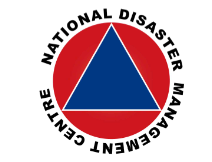Original Research
Assessing urban fire risk in the central business district of Dar es Salaam, Tanzania
Jàmbá: Journal of Disaster Risk Studies | Vol 3, No 1 | a33 |
DOI: https://doi.org/10.4102/jamba.v3i1.33
| © 2010 Yohannes Kachenje, Jacob Kihila, Huba Nguluma
| This work is licensed under CC Attribution 4.0
Submitted: 25 April 2010 | Published: 25 April 2010
Submitted: 25 April 2010 | Published: 25 April 2010
About the author(s)
Yohannes Kachenje, Assistant Research Fellow at the Institute of Human Settlement Studies (IHSS), Ardhi University, Dar es Salaam, Tanzania, United Republic ofJacob Kihila, Assistant Research Fellow at the Institute of Human Settlement Studies (IHSS), Ardhi University, Dar es Salaam, Tanzania, United Republic of
Huba Nguluma, Senior Research Fellow at the Institute of Human Settlement Studies (IHSS), Ardhi University, Dar es Salaam, Tanzania, United Republic of
Full Text:
PDF (1MB)Abstract
Buildings as infrastructure along with people’s lives need protection against fire outbreaks. Knowledge on the use of installed facilities is essential in tackling There emergencies, otherwise their installation becomes meaningless. Lack of such knowledge could hamper escape from There hazards and thwart attempts to contain there outbreaks at their preliminary stage. THis study, carried out in the Central Business District of Dar es Salaam City, assessed urban there risk with respect to public awareness on the use of #re #ghting facilities and preparedness in the event of #re outbreaks. Public buildings with at least four storeys or 2000m2 floor space were surveyed. According to the Fire and Rescue Act of 2007, such buildings have to be provided with adequate means of escape and #re #ghting facilities. Data was collected through observation and interviews with building managers, users and key informants. The study revealed high there disaster risk in most buildings of the study area, as 60% of the buildings’ users do not know how to operate the facilities, and 41% are not aware of the available escape means in case of there outbreak. Worse still, only 29% had received training within the past five years, and 68% had never been trained.
Keywords
No related keywords in the metadata.
Metrics
Total abstract views: 5138Total article views: 8282

